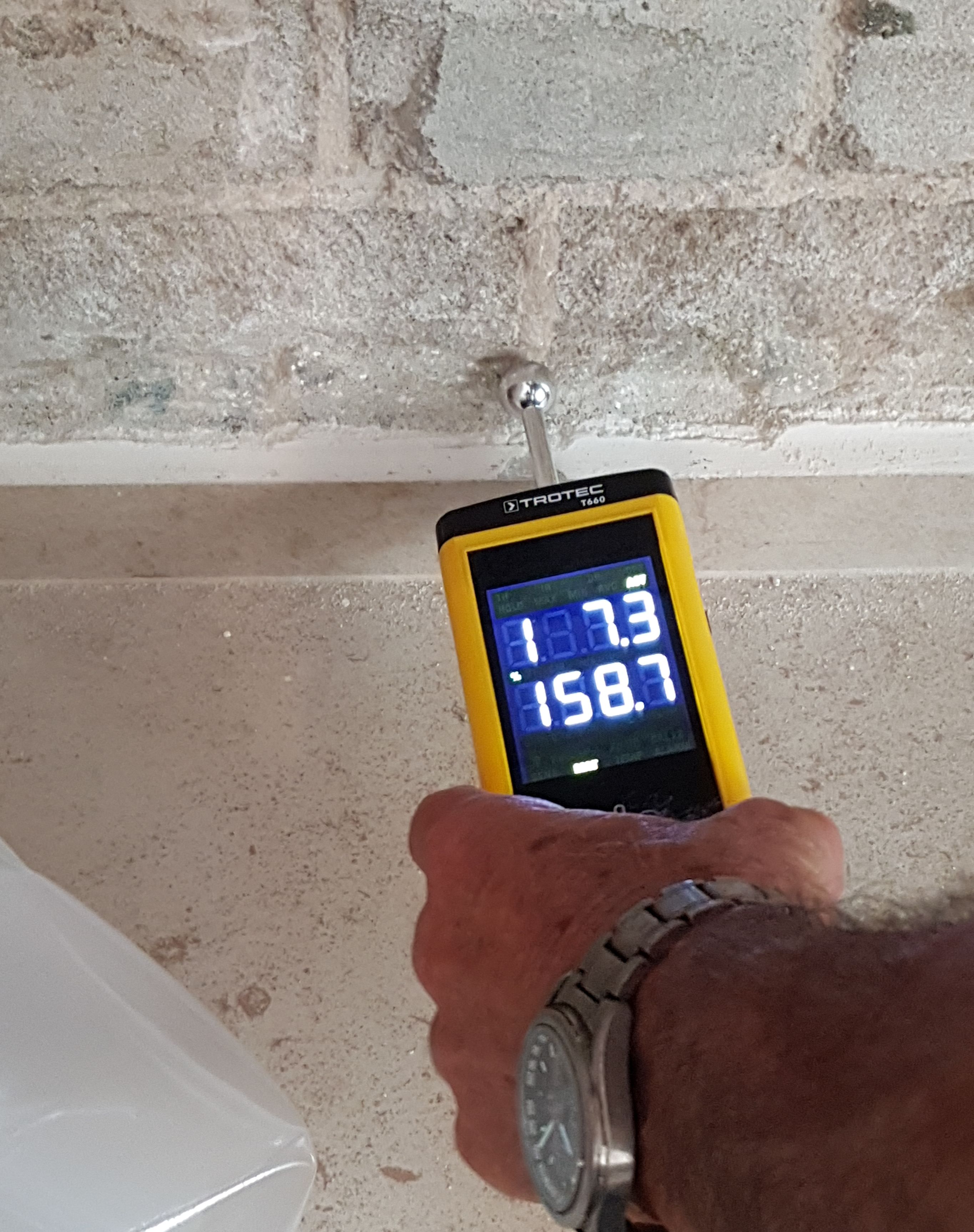Moisture Meter Acquiring Overview: What to Look for in High-Quality Instruments
Moisture Meter Acquiring Overview: What to Look for in High-Quality Instruments
Blog Article
Understanding the Significance of a Moisture Meter in Protecting Against Mold and Water Damage in your house
In the realm of home upkeep, the presence of moisture can commonly be a silent yet awesome foe, qualified of triggering prevalent mold development and insidious water damages if left untreated. In the middle of the serene atmosphere of a residence, concealed moisture problems can make below the surface area, positioning a threat to both home and health. Nonetheless, geared up with the right devices and knowledge, homeowners can proactively deal with these potential risks. Comprehending the value of a moisture meter in this fight is not simply a choice yet a tactical need.
Relevance of Moisture Detection
Effective wetness detection approaches are important for protecting homes and avoiding possible mold and mildew development and water damage. Wetness can leak right into different building materials, resulting in structural issues and carcinogen. By utilizing a wetness meter, homeowner can proactively recognize areas vulnerable to excess dampness, permitting for prompt treatment and mitigation techniques.
Moisture meters provide exact analyses of wetness levels in various products such as wood, concrete, and drywall. This data aids in identifying areas of problem, also in concealed or hard-to-reach places. Early detection of wetness accumulation makes it possible for timely repair work or changes to stop additional damage.

Exactly How Moisture Meters Work
Dampness meters play a pivotal duty in the positive recognition of excess wetness, aiding in the avoidance of prospective mold and mildew growth and water damages by offering accurate analyses of dampness levels in numerous structure products. These tools function based on different concepts, depending upon their kind. Moisture Meter. Pin-type dampness meters, for instance, have 2 pins that penetrate the material to gauge the electrical resistance in between them. When moisture is present, it enhances the material's conductivity, leading to a lower resistance analysis. Pinless moisture meters, on the various other hand, use electro-magnetic sensing units to scan the product without triggering damages. These sensors send out electromagnetic signals that permeate the material and gauge the dielectric residential properties, indicating moisture web content. Some progressed moisture meters integrate both pin and pinless modern technologies for thorough dampness detection. Recognizing just how moisture meters function is necessary for exact and timely moisture level assessments, making it possible for effective preventive steps against mold and mildew and water damages.
Finding Early Warning Indicators
Upon preliminary inspection of a residential or commercial property, recognizing subtle indications of excess dampness becomes important in the early detection of potential mold growth and water damage. Some usual early caution indications consist of stuffy odors, water stains on ceilings or walls, peeling paint or wallpaper, and distorted or tarnished surface areas. Stuffy odors click this frequently indicate the visibility of mold or mold, even if no visible indicators appear. Water spots can signify leakages or infiltration, while peeling off paint or wallpaper might be a result of moisture jeopardizing the bond of these materials to the surface. Warped or blemished surface areas, such as bending floorboards or discolored drywall, are clear indicators of water damage. Furthermore, a rise in allergy signs and symptoms or respiratory system issues amongst occupants might suggest the existence of mold because of excess moisture. By promptly determining and resolving these very early warning indicators, house owners can alleviate the threat of substantial mold and mildew growth and water damages in their homes.
Stopping Mold And Mildew Development
Recognizing very early indication of excess dampness within a property not only enables punctual discovery of potential mold and mildew growth and water damage yet additionally works as a proactive action in preventing the proliferation of mold and mildew. To efficiently protect against mold and mildew development, it is important to deal with any type of sources of dampness without delay. This can include repairing leaks in pipelines, windows, or roofs, ensuring appropriate ventilation in moist locations like kitchens and restrooms, and utilizing dehumidifiers in high-humidity spaces. Regularly maintaining the residential property and evaluating's pipes, roof, and rain gutters can also help in stopping water intrusion that could bring about mold development.
Checking dampness levels in locations susceptible to dampness, such as cellars and creep areas, using a dampness meter can also assist in very early discovery of raised dampness degrees and potential mold and mildew development - Moisture Meter. By taking positive measures to protect against excess moisture and mold growth, property owners can secure their residential or commercial property and indoor air quality.
Benefits of Normal Monitoring
Normal surveillance of dampness degrees in a building can play a crucial role in preserving a healthy interior environment and preventing prospective mold and mildew and water damages. By on a regular basis inspecting moisture degrees, homeowners can identify any type of problems immediately and take necessary activities to avoid mold development and water damage.
Additionally, regular surveillance permits house owners to track patterns and trends in dampness degrees with time. By establishing a standard and tracking modifications, people can recognize any areas of issue or prospective susceptabilities in the residential or commercial property's structure. This data-driven strategy allows targeted treatments and maintenance efforts to attend to underlying problems before they intensify right into more considerable problems. Inevitably, the constant tracking of wetness degrees equips homeowners to safeguard their residential property, guard their wellness, and protect the honesty of their interior atmosphere.

Final Thought

By making use of a dampness meter, building owners can proactively identify areas prone to excess dampness, permitting for timely treatment and mitigation techniques.

Checking dampness levels in locations susceptible to wetness, such as cellars and crawl rooms, utilizing a wetness meter can additionally aid in very early discovery of elevated wetness levels and possible mold and mildew growth. (Moisture Meter)
Report this page